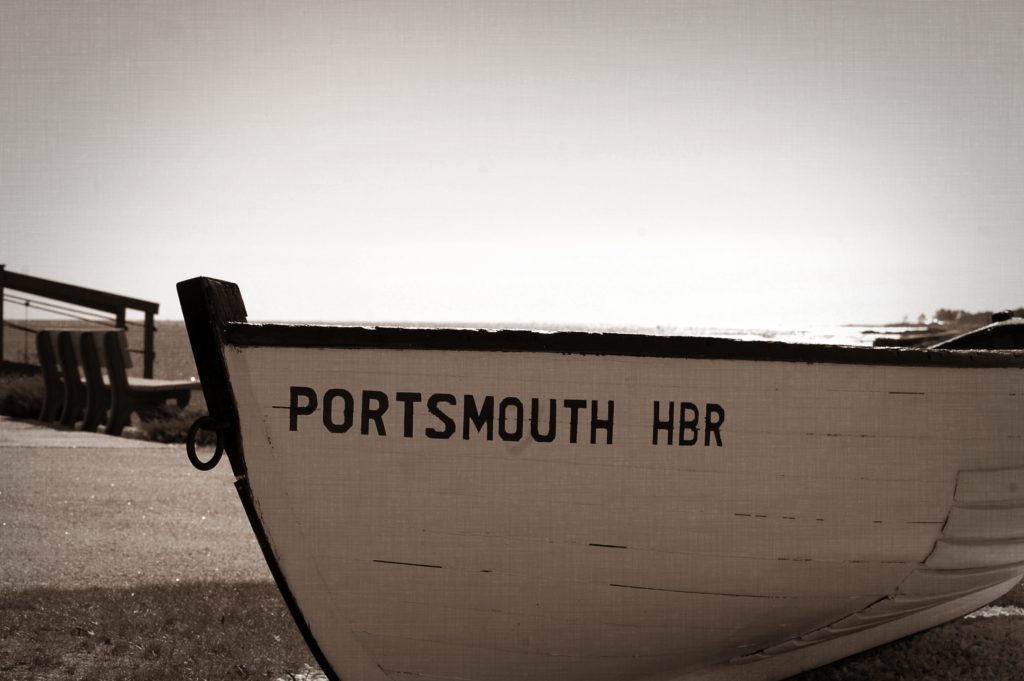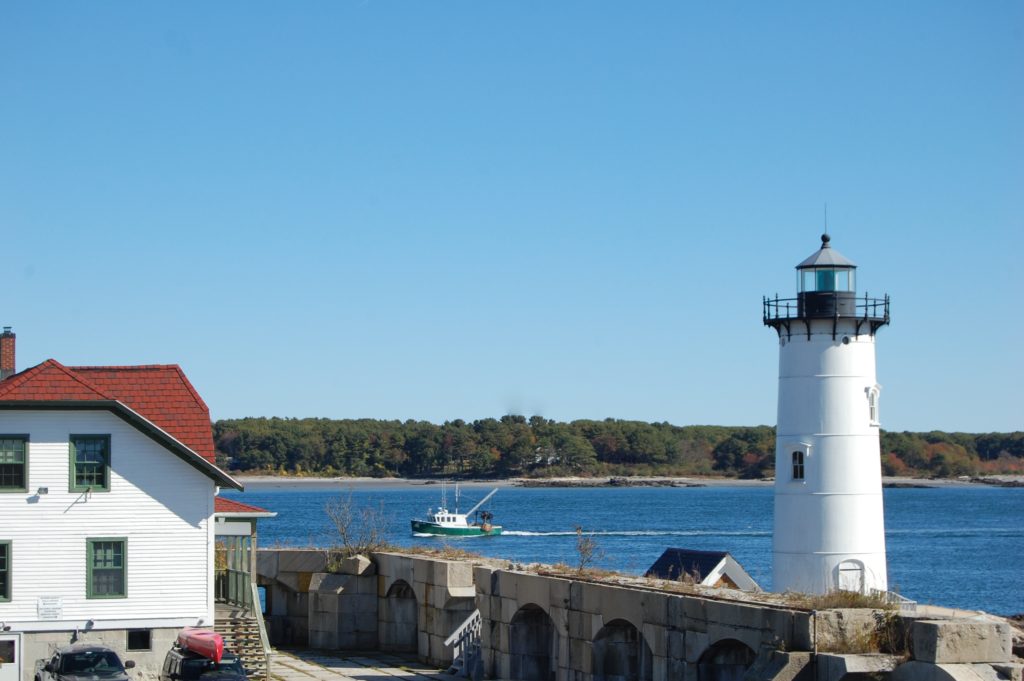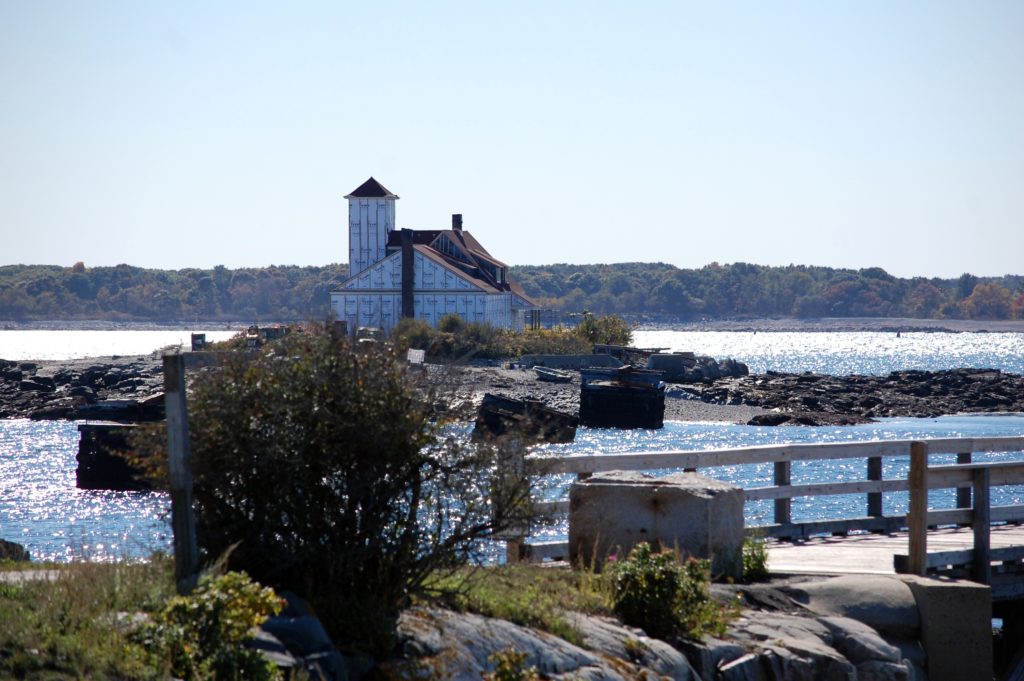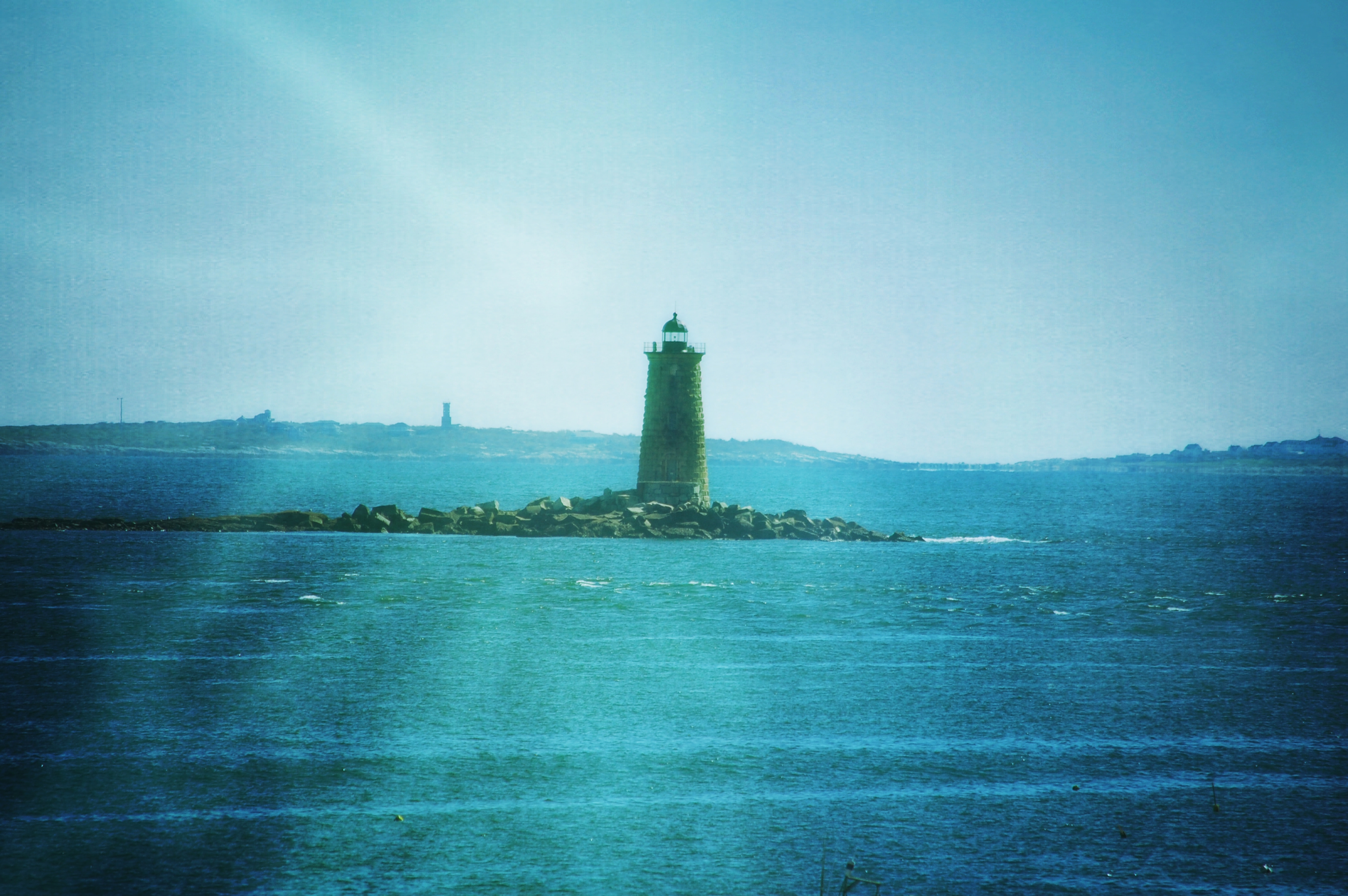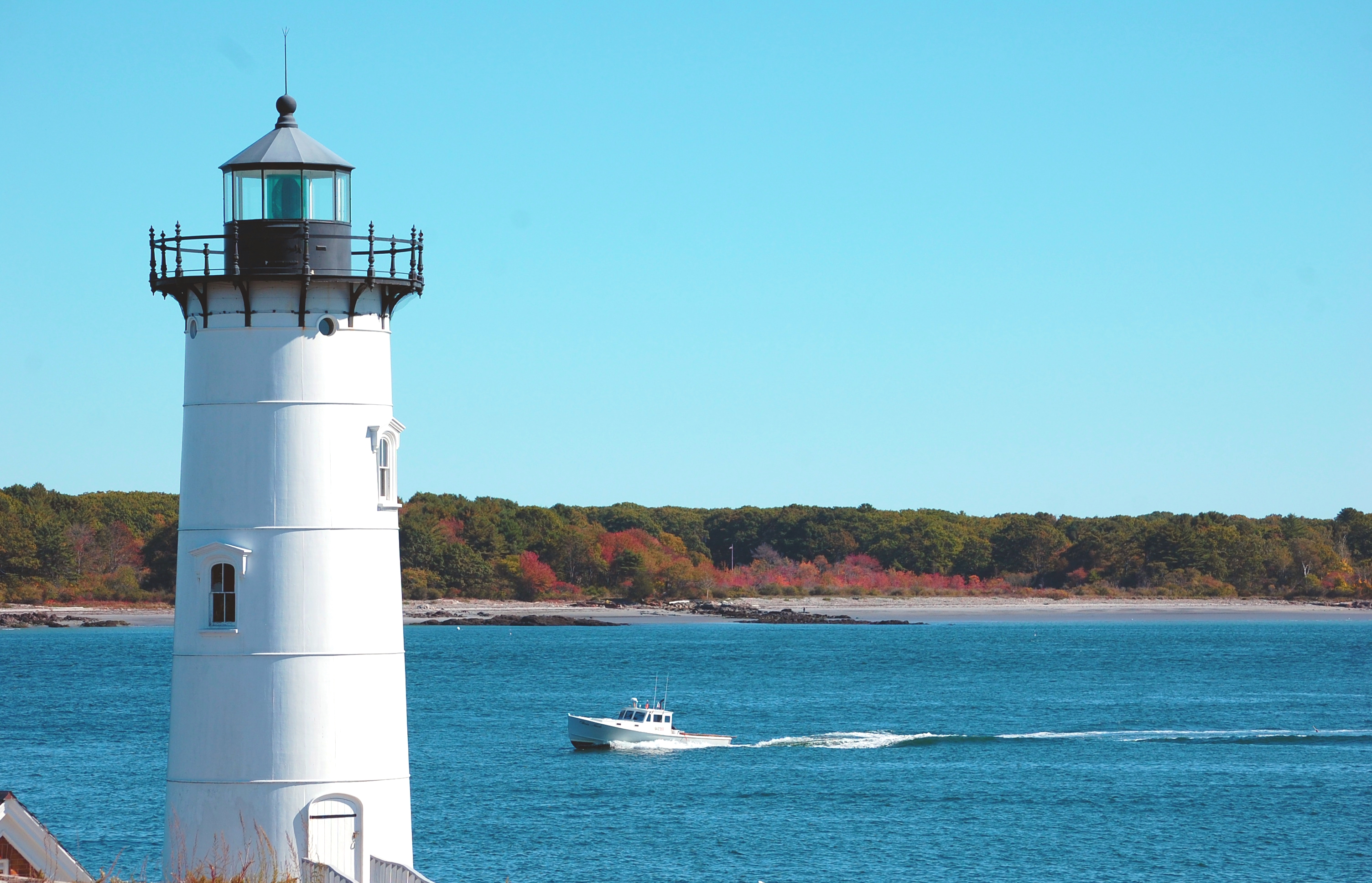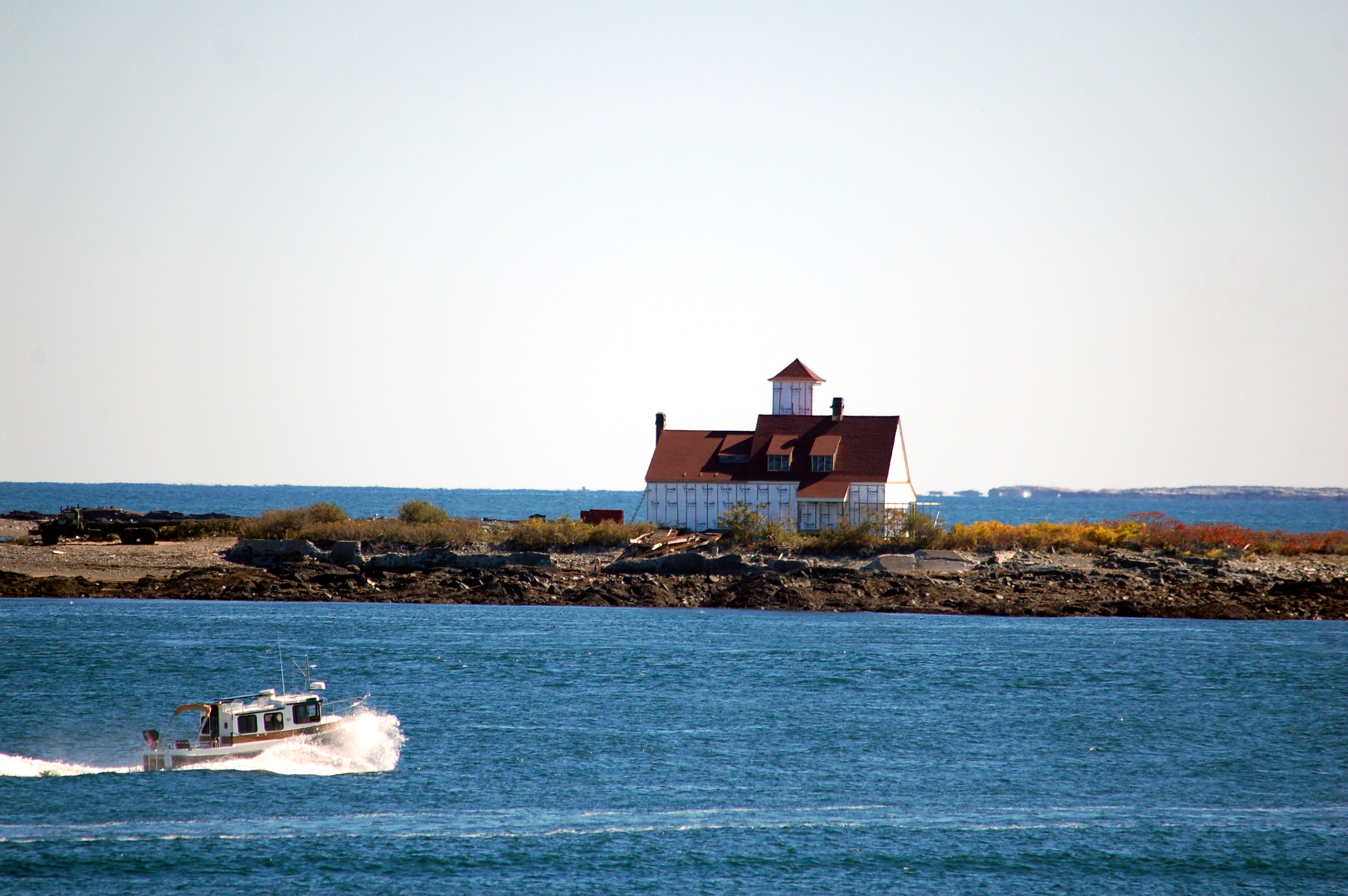The west bank of the harbor was settled by English colonists in 1630 and named Strawbery Banke, after the many wild strawberries growing there. The village was fortified by Fort William and Mary. Strategically located for trade between upstream industries and mercantile interests abroad, the port prospered. Fishing, lumber and shipbuilding were principal businesses of the region.
In 1774, in the lead-up to the Revolution, Paul Revere rode to Portsmouth warning that the British were coming, with warships to subdue the port.[6] Although the harbor was protected by Fort William and Mary, the rebel government moved the capital inland to Exeter, safe from the Royal Navy. The Navy bombarded Falmouth (now Portland, Maine) on October 18, 1775.
Wood Island Lighthouse
This Light is a historic lighthouse marking the mouth of the Piscataqua River between New Castle, New Hampshire and Kittery, Maine. It is located on a rocky outcrop offshore southwest of Fort Foster and south of Wood Island in Kittery. A light has been active at this location since 1820; the present tower was built in 1872. It was listed on the National Register of Historic Places in 1988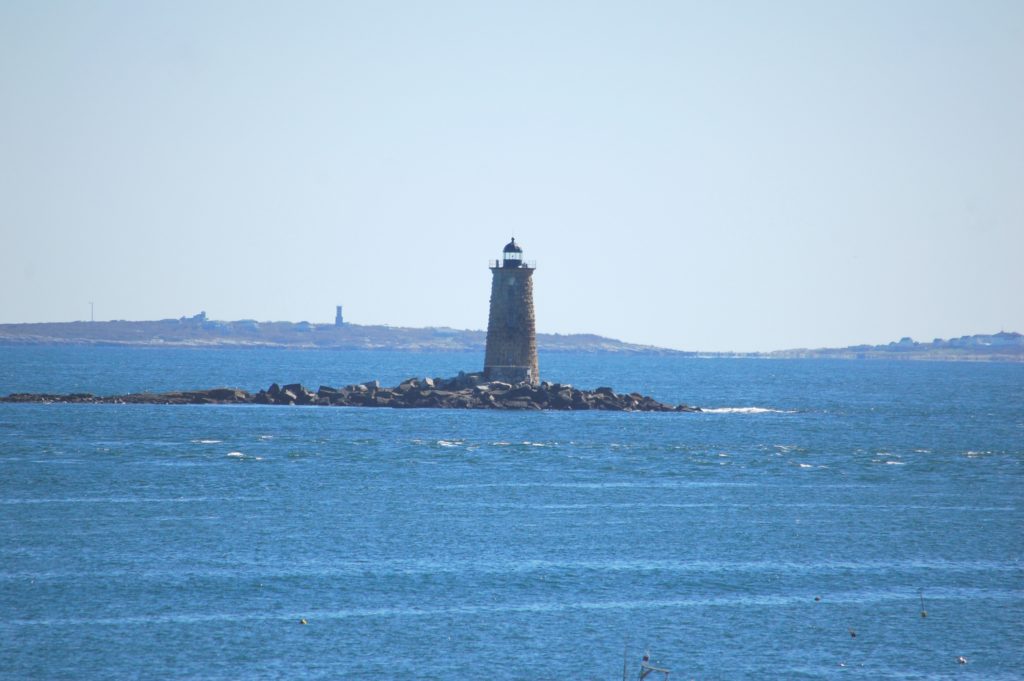
At some point the fog bell was replaced with a horn and in 1991, the volume of the horn was reduced because it was damaging the integrity of the structure. The light was automated in 1963.The current lighthouse exhibits two white flashes every 10 seconds and is created by a modern VLB-44 LED light, which was installed in October 2009.
Wood Island
In 1827, the Maine State Legislature ceded Wood Island to the Federal Government. The U.S. Navy is reported to have constructed a barracks there around that time, however, an 1865 photo shows only a barren island. By 1889, a military hospital had been erected along with several outbuildings. Spanish-American War prisoners were quarantined there to prevent the spread of Yellow Fever.
Wood Island LSS 2 copy 2In 1908, the current Life Saving Station and a tool shed were built by Sugden Brothers of Portsmouth, N.H. for the US Life Saving Service. It’s a Duluth-style station designed by architect George R. Tolman and it replaced the original Jerry’s Point Station #12 across the harbor in New Castle, N.H. which had been requisitioned by the U.S. Navy. The U.S. Life Saving Service became part of the U.S. Coast Guard in 1915. Many lives had been lost over the years from ship wrecks on the rocky shore of Maine and New Hampshire and now a crew of men were in place to protect mariners.
The US Navy took over the Wood Island Life Saving Station early in World War II to help protect submarine manufacturing at the Portsmouth Naval Shipyard from German U-Boats patrolling the Atlantic Coast. In 1941 Wood Island was integrated into the coastal defense system. As a strategic observation post, the property was also utilized for securing anti-submarine nets, which were strung across the harbor to thwart German U-Boat infiltration. At the end of the war, the property reverted back to the U.S. Coast Guard. In the early 1950’s U.S.C.G. moved to their present day facility, across the harbor again, to New Castle, N.H. The Life Saving Station has been unused since that time.
https://en.wikipedia.org/wiki/Portsmouth,_New_Hampshire
https://en.wikipedia.org/wiki/Whaleback_Light
